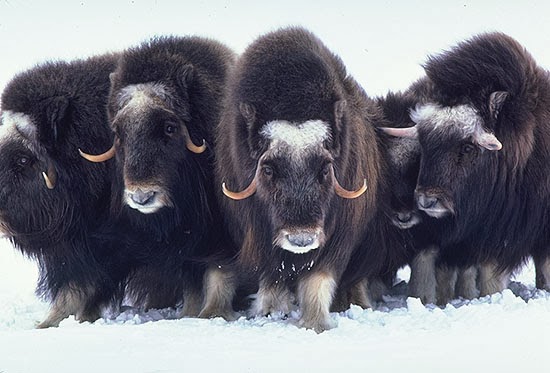As temperatures keep dropping and clothing layers pile up, it's remarkable to think about how animals can live in frozen tundras with just fat and fur.
These animals, ranging from one of the largest land mammals on Earth to flightless birds, these fascinating creatures are perfectly suited for harsh winter environments.
Polar Bear
One of the largest land mammals on Earth, polar bears are located in Northern Canada, Alaska, Russia and Norway. They are able to live in these extreme temperatures partly because their coat and skin are adapted to retain heat and sunlight.
Get a commemorative polar bear
here.
Arctic Fox
Native to the Arctic region, the fox's small body, dense fur, and furry paws are adaptations that are beneficial to these cold temperatures. The arctic fox can even wrap it's large bushy tail around itself for warmth.
Fascinated by this fox? Purchase a figurine
here.
Snowy Owl
The Snowy Owl is the largest owl in the arctic and has a wingspan of about 5 feet. A carnivore, this owl is a patient hunter with excellent eye sight. Unlike most owl that are nocturnal, the Snowy Owl is diurnal, meaning it hunts during both the night and day.
Get 'Ghost', the Snowy Owl porcelain figurine
here.
Caribou
Caribou, or reindeer, are well adapted to live in the tundras because of their thick skin and fur. In the winter, the are able to use their hooves to dig through snow to forage for moss and other food.
Every house hold needs a caribou statue. How about
this one?
Penguin
Penguins are aquatic, flightless birds, highly adapted to water. In fact they spend nearly 75% of their life in the water hunting food. Their unmistakable tuxedo is a form of camouflage for protection. From above their back looks black and blends into the dark waters, from below their underside matches the lighter sky.
Want a porcelain token of this fun and stylish social bird, how about this
penguin chick or
penguin on skis?
Musk Ox
Musk Oxen will reach lengths of about 7 feet, can carry 400-900 pounds and have 2 coat layers; the outer of hair, the inner of wool. This adaptation is what helps the musk ox survive during extreme cold temperatures.
These furry, powerful beings were meant to be admired. Add a
musk ox figurine to your collection.
Snowshoe Hare
Not only can the snowshoe hare change its fur color to hide from predators, they also have much larger hind legs than typical hares to act as a sort of snowshoe, allowing them to walk on snow. This is what gave them their common name.
These adorable, sprightly hares in
porcelain form are a perfect winter accoutrement for your home.
Animals, after-all are quite admirable!
Happy Wednesday!
-
Little Critterz






























.jpg)


















